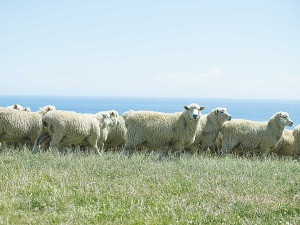Move over ham, here comes lamb
It’s official, lamb will take centre stage on Kiwi Christmas tables this year.
 BNZ’s 2020/21 season average lamb price forecast of $6.60/kg sits close to the past five-year average.
BNZ’s 2020/21 season average lamb price forecast of $6.60/kg sits close to the past five-year average.
While lamb prices are starting the new season at around 16% below last year’s levels, they are not outright weak, according to the BNZ.
In its latest Rural Wrap newsletter, BNZ senior economist Doug Steel says the current price of $7/kg is sitting close to the 5-year average for this time of year.
“We’d argue this is a very credible performance, given the circumstances,” Steel says. “This expected lower average for the new season – compared to the season just finished – largely reflects a lower starting point rather than necessarily further weakness from here.”
He says while there are many factors to consider, BNZ remains generally cautious about demand. However, Steel believes the supply side of the equation has the potential to offer some price support.
BNZ says Covid-19 continues to dominate things, with European case numbers tracking higher.
“This is cause for concern, as some new restrictions are imposed.
“While many restaurants are open, the uncertainty alone has been unhelpful for forward orders – including for the lucrative Christmas chilled trade.”
Meanwhile, the bank adds that the ongoing the UK-EU trade negotiations are also adding to insecurity.
“Uncertainty remains as the end of year Brexit deadline looms,” it says. “The base case is that some sort of deal will be cobbled together before the end of this year but, as with all things Brexit, there are no guarantees. The coming weeks will be crucial.”
However, BNZ says more encouraging signs of recovery are coming out of China.
“This provides a better backdrop for lamb demand ahead, with Chinese purchasing power further supported by a gradually appreciating yuan,” Steel explains.
“African Swine Fever (ASF) remains an important consideration for lamb demand. Ongoing disruption to pork supplies is supporting demand for alternative meats, including lamb.”
Steel says, overall, the outlook for lamb demand has a fair spread of positives and negatives in the mix.
“That alone is reason enough to be cautious,” he says. “But even if demand softens a bit that does not necessarily mean prices will fall further, with the supply side generally looking price supportive for the season ahead.”
The BNZ is also anticipating that tighter NZ supply will provide some support to prices over the season.
“We await the industry’s first estimate for the new season’s national lamb crop, usually available in November, with interest.”
Steel says the BNZ’s 2020/21 season average lamb price forecast of $6.60/kg sits close to the past five-year average.
“Given the serious challenges that the world currently faces, this would be a respectable outcome.”
Greenlea Premier Meats managing director Anthony (Tony) Egan says receiving the officer of the New Zealand Order of Merit (ONZM) honour has been humbling.
Waikato dairy farmer Neil Bateup, made a companion of the New Zealand Order of Merit (CNZM) in the New Year 2026 Honours list, says he’s grateful for the award.
Another Australian state has given the green light to virtual fencing, opening another market for Kiwi company Halter.
Farmer interest continues to grow as a Massey University research project to determine the benefits or otherwise of the self-shedding Wiltshire sheep is underway. The project is five years in and has two more years to go. It was done mainly in the light of low wool prices and the cost of shearing. Peter Burke recently went along to the annual field day held Massey's Riverside farm in the Wairarapa.
Applications are now open for the 2026 NZI Rural Women Business Awards, set to be held at Parliament on 23 July.
Ravensdown has announced a collaboration with Kiwi icon, Footrot Flats in an effort to bring humour, heart, and connection to the forefront of the farming sector.

OPINION: The release of the Natural Environment Bill and Planning Bill to replace the Resource Management Act is a red-letter day…
OPINION: Federated Farmers has launched a new campaign, swapping ‘The Twelve Days of Christmas’ for ‘The Twelve Pests of Christmas’ to…